 W
WAegina was a figure of Greek mythology, the nymph of the island that bears her name, Aegina, lying in the Saronic Gulf between Attica and the Peloponnesos. The archaic Temple of Aphaea, the "Invisible Goddess", on the island was later subsumed by the cult of Athena. Aphaia (Ἀφαῖα) may be read as an attribute of Aegina that provides an epithet, or as a doublet of the goddess.
 W
WIn Greek mythology, Ambrosia was the name of one of the hyades, daughter of Oceanos or Atlas.
 W
WApollo and Daphne is a story from ancient Greek mythology, retold by Hellenistic and Roman authors in the form of an amorous vignette.
 W
WAsterope was a Hesperid in Greek mythology.
 W
WBritomartis was a Greek goddess of mountains and hunting, who was primarily worshipped on the island of Crete. She was sometimes believed to be an oread, or a mountain nymph, but she was often conflated or syncretized with Artemis and Aphaea, the "invisible" patroness of Aegina. She is also known as Diktynna.
 W
WCaïssa is a fictional (anachronistic) Thracian dryad portrayed as the goddess of chess. She was first mentioned during the Renaissance by Italian poet Hieronymus Vida.
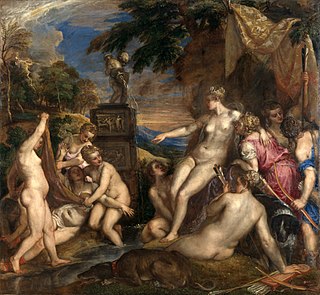 W
WIn Greek mythology, Callisto or Kallisto was a nymph, or the daughter of King Lycaon; the myth varies in such details. She was one of the followers of Artemis who attracted Zeus (Jupiter). According to some writers, Zeus transformed himself into the figure of Artemis to lure Callisto and seduce her. She became pregnant and when this was eventually discovered, she was expelled from Artemis's group, after which a furious Hera (Juno), the wife of Zeus, transformed her into a bear. Later, just as she was about to be killed by her son when he was hunting, she was set among the stars as Ursa Major. She was the bear-mother of the Arcadians, through her son Arcas by Zeus.
 W
WThe Cave of the Storm Nymphs is a painting by British artist Edward Poynter, depicting three nude sirens or nymphs from Greek mythology that lure sailors to their deaths. Poynter painted two versions, one in 1902 and the other in 1903, with minor differences. The former is housed in the Norfolk, Virginia Hermitage Museum, and the latter is in the private collection of Sir Andrew Lloyd Webber. One of the depicted sirens is playing a golden stringed, tortoise-shell lyre, while the other two sirens rejoice amid the foundering ship, expecting to add to the cave’s treasure.
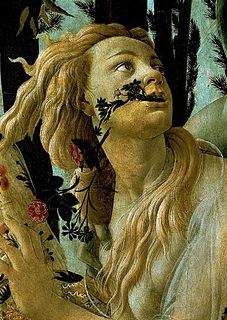 W
WIn Greek mythology, Chloris was a nymph or goddess who was associated with spring, flowers and new growth, believed to have dwelt in the Elysian Fields.
 W
WIn Greek mythology, Combe was a daughter of the river god Asopus.
 W
WDaphne, a minor figure in Greek mythology, is a naiad, a variety of female nymph associated with fountains, wells, springs, streams, brooks and other bodies of freshwater. She is said by ancient sources variously to have been a daughter of the river god Peneus and the nymph Creusa in Thessaly or of Ladon or Pineios, and to Ge .
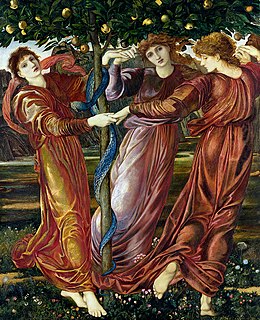 W
WIn Greek mythology, the Hesperides are the nymphs of evening and golden light of sunsets, who were the "Daughters of the Evening" or "Nymphs of the West". They were also called the Atlantides (Ἀτλαντίδων) from their reputed father, the Titan Atlas.
 W
WHylas and the Nymphs is an 1896 oil painting by John William Waterhouse. The painting depicts a moment from the Greek and Roman legend of the tragic youth Hylas, based on accounts by Ovid and other ancient writers, in which the enraptured Hylas is abducted by Naiads while seeking drinking water.
 W
WJupiter and Antiope is an oil painting by the French artist Antoine Watteau. It is also known as the Satyr and the Sleeping Nymph and was probably painted between 1714 and 1719. Intended to be placed over a doorway, today it hangs in the Louvre in Paris.
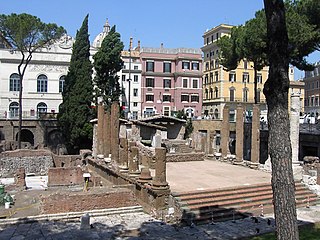 W
WIn the myth and religion of ancient Rome, Juturna, or Diuturna, was a goddess of fountains, wells and springs, and the mother of Fontus by Janus.
 W
WIn Greek mythology, Lotis was a nymph mentioned by Ovid.
 W
WIn Greek mythology, maenads were the female followers of Dionysus and the most significant members of the Thiasus, the god's retinue. Their name literally translates as "raving ones". Maenads were known as Bassarids, Bacchae, or Bacchantes in Roman mythology after the penchant of the equivalent Roman god, Bacchus, to wear a bassaris or fox skin.
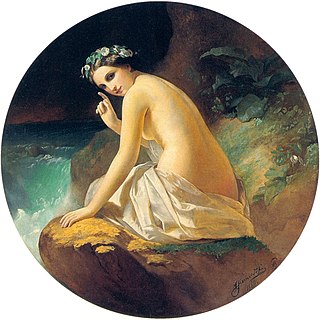 W
WIn Roman mythology, Marica was a nymph, the mother of Latinus. Latinus was fathered by Faunus, who was also occasionally referred to as the son of Marica. The sacred forest near Minturnae was dedicated to Marica. A lake nearby was also named after her. Various Roman authors claims that she was a form of Diana or Venus.
 W
WMetis, in ancient Greek religion, was a mythical Titaness belonging to the second generation of Titans.
 W
WIn Greek mythology, Nephele was a cloud nymph who figured prominently in the story of Phrixus and Helle.
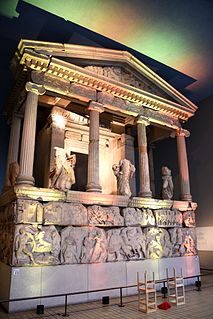 W
WIn Greek mythology, the Nereids are sea nymphs, the 50 daughters of Nereus and Doris, sisters to their brother Nerites. They often accompany Poseidon, the god of the sea, and can be friendly and helpful to sailors.
 W
WA nymph in ancient Greek folklore is a minor female nature deity. Different from Greek goddesses, nymphs are generally regarded as personifications of nature, are typically tied to a specific place or landform, and are usually depicted as beautiful maidens. They were not necessarily immortal, but lived much longer than humans before they died.
 W
WA nymphaeum or nymphaion, in ancient Greece and Rome, was a monument consecrated to the nymphs, especially those of springs.
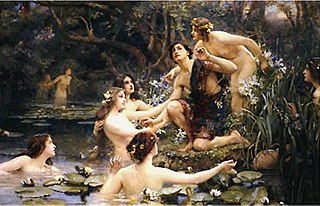 W
WNympholepsy is the belief of the ancient Greeks that individuals could be possessed by the nymphs. Individuals who considered themselves nympholepts would display a great religious devotion to the nymphs. An example is Archedemos of Thera, who built the sanctuary of the nymphs in the Vari Cave northeast of Attica, Greece.
 W
WIn Greek mythology, an Oread or Orestiad ; Όρεστιάδες, Orestiades) is a mountain nymph. They differ from each other according to their dwelling: the Idaeae were from Mount Ida, Peliades from Mount Pelion, etc. They were associated with Artemis, since the goddess, when she went out hunting, preferred mountains and rocky precipices.
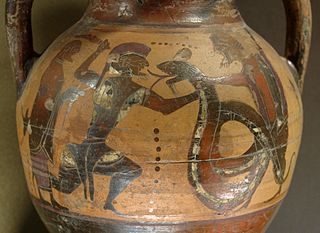 W
WIn Greek mythology, Orphne, also known as Styx or Gorgyra, was a nymph that lived in Hades. With Acheron, she mothered Ascalaphus.
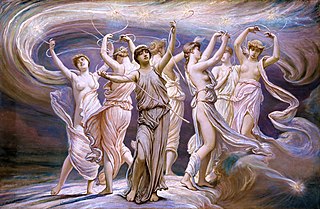 W
WThe Pleiades, companions of Artemis, were the seven daughters of the titan Atlas and the sea-nymph Pleione born on Mount Cyllene. They were the sisters of Calypso, Hyas, the Hyades, and the Hesperides. Together with the seven Hyades, they were called the Atlantides, Dodonides, or Nysiades, nursemaids and teachers to the infant Dionysus. They were thought to have been translated to the night sky as a cluster of stars, the Pleiades, and were associated with rain.
 W
WSalmacis or Salmakis was the name of a fountain or spring located in modern-day Bodrum, Turkey. According to some classical authors, the water had the reputation of making men effeminate and soft. Ovid famously recounts the myth in his story about Hermaphroditus and the nymph of the spring Salmacis.
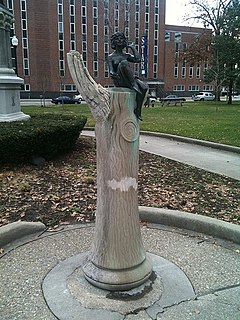 W
WSyrinx is a 1973 public artwork by German-born American sculptor Adolph Wolter located at the Indiana World War Memorial Plaza in Indianapolis, Indiana, United States.
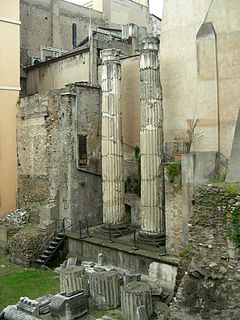 W
WThe Temple of the Nymphs was a temple in ancient Rome dedicated to the Nymphs, evidenced in several sources and generally identified with the remains on what is now via delle Botteghe Oscure.
 W
WThetis, is a figure from Greek mythology with varying mythological roles. She mainly appears as a sea nymph, a goddess of water, or one of the 50 Nereids, daughters of the ancient sea god Nereus.